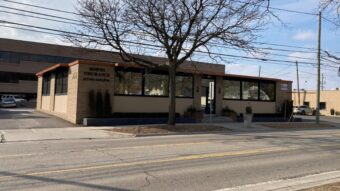Column by David Scherer, Principal, Origin Investments
Property tax bills are hitting Chicago mailboxes, and taxpayers are up in arms. The skyrocketing rates are a by-product of the record $588 million property tax increase passed last fall by the Chicago City Council. Though increases are never welcomed by taxpayers, downtown properties are shouldering a substantial portion of that sum, so Chicagoans can thank Loop landlords that those increases aren’t even higher.
But my firm, Origin Investments, believes the higher tax bill is still a good value for those properties and the businesses they house.
Loop landlords have reaped admirable benefits from their properties’ prime location to date. Their buildings, and those in the surrounding central business district, command premium rents — $36.79 per square foot across all classes and about 59 percent above the asking rents for suburban properties, according to JLL’s year-end report.
Among Class A properties, the $40.69 asking rent is favorable for Chicago’s businesses when compared with New York, Los Angeles and San Francisco. Even the most expensive Loop properties have a long way to go before they reach Manhattan’s $100 per square foot rental top tier.
Chicago residents are also luckier than they think: New investment in the Loop has kept them from shouldering an even bigger tax burden since Cook County assesses commercial real estate at a higher value than housing, notes The Civic Federation.
Apartment buildings get a lower rate, and exemptions cut homeowners’ tax bills even further. Even after a tax increase, a Chicago Tribune analysis finds the city’s effective tax rate for homeowners will still be in the region’s bottom 10 percent.
And real estate investors who choose properties in Chicago’s Loop and central business district will be able to maintain their advantages for several reasons.
First is Chicago’s ability to draw a highly educated workforce that is attracted to city living. Investors are capitalizing on a factor that even suburban landlords rely on: the city’s continued central role in the region’s health.
This is especially true for millennials. The U.S. Census finds these young adults are more likely to move to urban centers and research hubs. Many matriculate here. With DePaul, Loyola, Northwestern, University of Chicago and more, Chicago has one of the strongest higher-education systems nationally. And post-graduation, students from prestigious Midwest schools make a beeline to Chicago for its robust job market, vibrant urban attractions, conveniences and cross-country and international access from O’Hare and Midway airports.
Second is Chicago’s business and cultural assets. Coupled with that rush of well-educated, new talent, these resources attract big business to the city’s center. Kraft, Heinz, United Airlines, BP, ConAgra and Hillshire brands are major old-line companies moving suburban operations to the city and among dozens of firms that chose to locate or expand in the Chicago area in 2015, notes World Business Chicago.
Finally, when we look at a commercial real estate investment, we measure things such as walkability; we want areas that have it all. The Loop and its contiguous neighborhoods do, and their advantage is borne out in a commuting shift. Since 1994, CTA ridership has increased 97 percent while Metra ridership has increased 17 percent. Young people are choosing to live closer to the action.
Development patterns bear out the Loop’s advantage. In JLL’s market survey, 64 percent of the Chicago market’s office space is concentrated in the central city.
Millennials have also driven a heated downtown market for apartments and condos. Appraisal Research Counselors estimates 3,101 multifamily units were added last year and predicts even faster growth in the next two years — to 4,500 units by 2017.
Origin owns buildings in 10 major cities, from Denver to Orlando. If you draw a circle around Chicago’s City Hall for two miles in every direction, you have the fastest growing “city” in America, according to a JLL report that quoted U.S. Census data. Downtown housing creates more demand, not less, as it spurs retail growth and even more demand. The Loop is a positive feedback loop. We don’t see any signs that will change.
This growth will help investors and their tenants meet the higher tax burden. Our research of 95 central-city buildings indicates property taxes have been rising proportionally at the same rate. With all downtown properties on a level playing field, landlords are more likely to pass on the higher taxes to tenants, and tenants who pay taxes directly are unlikely to find lower taxes nearby.
All this means the downtown office market will keep expanding: Between new construction and scheduled vacancies, CBRE estimates in the next three years, 6 million square feet of downtown office space will be on the market. With the building pace since 2010 at a historic low–only 4.5 million square feet built or under construction, compared with 15 million in the 2000s and 11 million in the 1990s, according to JLL — the Loop will be able to absorb all of that space and more, as it has for generations.
It’s a point worth remembering now that those tax bills have arrived.



